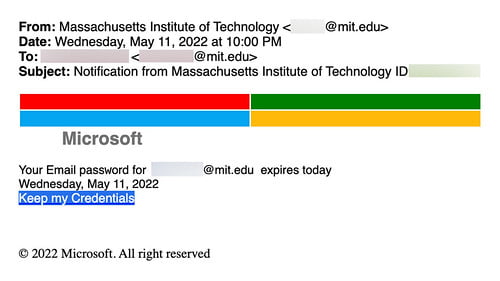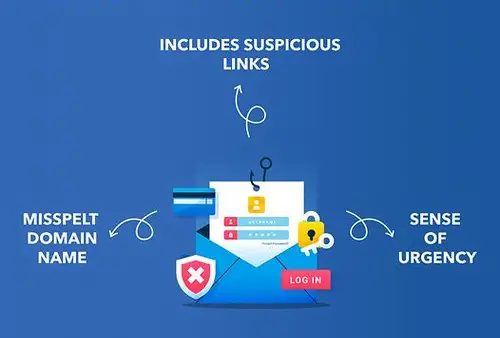9 Steps To Prevent Phishing Attacks
Table of Contents
Internet pirates steal personal financial information using a new sort of Internet piracy known as “phishing,” which is pronounced “fishing,” and that is exactly what these hackers are doing: “fishing” for your personal financial information.
Phishing scams are one of the most popular types of attacks. They are a very profitable attack strategy for hackers, with thousands falling prey to each year. Fortunately, because they are so frequent, phishing scams are preventable if you know how to spot and avoid them.
In the worst-case scenario, you may become a victim of identity theft. Criminals seek account numbers, passwords, Social Security Numbers, and other sensitive information that they may use to drain your bank account or rack up credit card bills. These crooks may get loans, credit cards, and even driver’s licenses in your name using sensitive information obtained through a successful phishing scheme.
They can do long-term damage to your financial history and personal reputation. However, by understanding how phishing works and how to protect yourself, you can help stop this crime.
Phishing Attack Types
In most cases, you will get an email that looks to originate from a legitimate entity with whom you are familiar and do business. In other situations, the email may appear to be from a government agency, like a federal financial institution regulating authorities. The email will most likely alert you to a critical issue that demands your urgent attention. It may use terms like “Immediate action necessary” or “Please contact us about your account immediately”. The email will then prompt you to click a link to the institution’s website.

In a phishing scam, the link takes you to a bogus website that appears to be a genuine page. But, it may not be the company’s own Website. In such circumstances, a pop-up window will appear rapidly in order to collect your financial information.

In either case, the website owner can ask you to update your account information or provide verification information. Information such as your Social Security number, or the information you use to verify your identity when speaking with a real financial institution.
How to Prevent Phishing Attacks
1. Give no personal information to a website that is not secure.
Do not enter sensitive information or download files from a website without “https” or without a closed padlock icon. However, it’s possible sites lacking security certifications aren’t intended for phishing schemes, it’s always better to be safe than sorry.
2. Set up firewalls
Firewalls work as a barrier between your computer and an attacker, preventing external attacks. When used in tandem, desktop, and network firewalls can improve security and lower the likelihood of a hacker penetrating your network.
For more information on the types of firewalls available, please read this article.
3. Invest in a data security platform that can detect symptoms of an attack
If you are the unfortunate victim of a successful phishing attack, you must react quickly. By automatically warning of aberrant user activity and undesirable file modifications, a data security platform relieves some of the load on the IT/security team.
If an attacker has accessed your sensitive data, data security platforms can assist you in identifying the compromised account to take steps to avoid additional harm.
4. Don’t be swayed by those annoying pop-ups
Pop-ups are not just annoying; they often are part of attempted phishing attacks. Most browsers now enable you to download and install free ad-blocking add-ons. Even a no-cost ad-blockers will automatically prevent the vast majority of dangerous pop-ups. If you do manage to avoid the ad blocker, don’t click! Sometimes pop-ups will attempt to trick you about where the “Close” button is, so always check for an “x” in one of the corners.
5. Don’t dismiss updates
Receiving multiple update notifications may be annoying, and it might be tempting to put them off or disregard them entirely. Do not do this. Security patches and updates are issued for a reason, mostly to stay updated with cyber-attack tactics by addressing security gaps. If you do not update your browser, you may be vulnerable to phishing attempts using known flaws that have been easily prevented.
10 Steps To Secure Linux Server + {Bonus Tips}
Linux servers are already extremely secure by default; that’s why 100% of supercomputers, most of the top 1 million servers, and top 25% of websites on the internet run on Linux. Besides having security tools in place, users should follow a few steps to further secure Linux servers.
6. Get anti-phishing extensions for free
Most browsers now allow you to download add-ons that detect fraudulent websites or warn you of known phishing sites. Because they are often absolutely free, there is no reason not to have one of them installed on every device in your firm.
7. Don’t provide your personal information to an unprotected website
Do not input sensitive information or download files from a website if the URL does not begin with “https” or if there is no closed padlock symbol next to the URL. All sites without an SSL certificate may not be phishing sites, but it is best to be safe than sorry.
8. Regularly change passwords
If you have online accounts, you should get into the habit of routinely changing your passwords to prevent an attacker from having unrestricted access. Your accounts may have been hacked without your knowledge, so adding an additional layer of security via password rotation helps prevent continuing attacks and keep prospective attackers out.
Best Linux Password Managers
The Internet is the need of the hour. People are trying to connect to the Internet to make life easier for themselves and their loved ones. Approximately 60% of the world’s population uses the Internet. Every day, around 8,75,000 new Internet users connect.
9. Unless absolutely necessary, do not provide sensitive information
As a general guideline, unless you completely trust the website, you should not freely provide your credit card information. If you must disclose your information, be certain that the website is authentic, the firm is legitimate, and the site itself is safe.
Conclusion
Organizations can detect some of the most frequent forms of phishing attempts by using the instructions above. Even yet, this does not guarantee that they will be able to detect every phishing attack. Phishing is continually adopting new forms and strategies. With this in mind, it is critical that firms provide continual security awareness training to their staff and leaders.
Frequently Asked Questions
What is phishing in cyber security
What helps protect from spear phishing
What are the 5 types of cyber attacks?
How to Report a Phishing Attack?
One can report phishing email to the email provider, report them to the relevant organization, and report it to the relevant authorities.
How to stop phishing emails
Be vigilant, Do not click on links or download attachments, Use spam filters, Verify the source, Use anti-phishing software, and educate yourself and others.
LinuxAndUbuntu Newsletter
Join the newsletter to receive the latest updates in your inbox.



